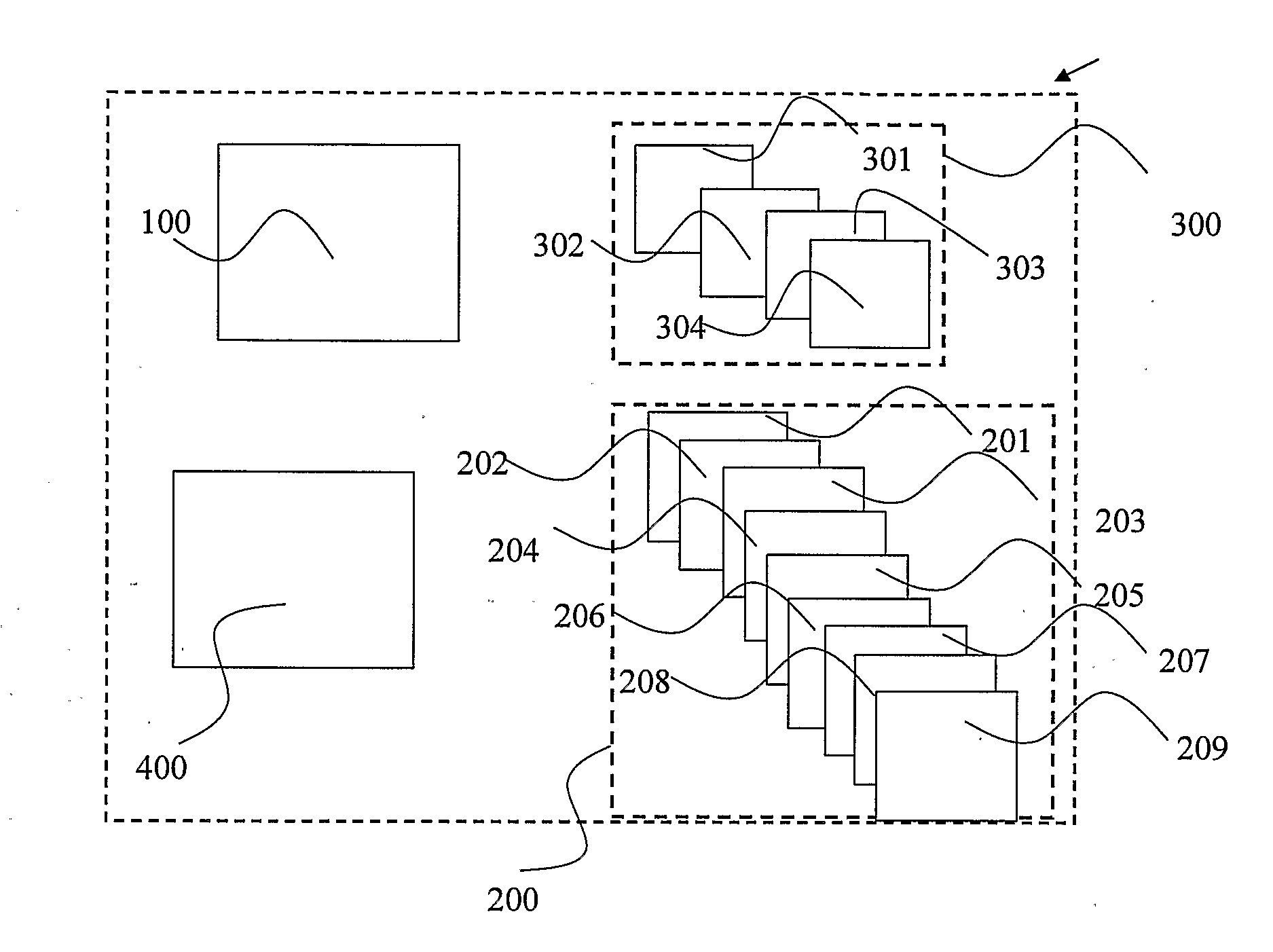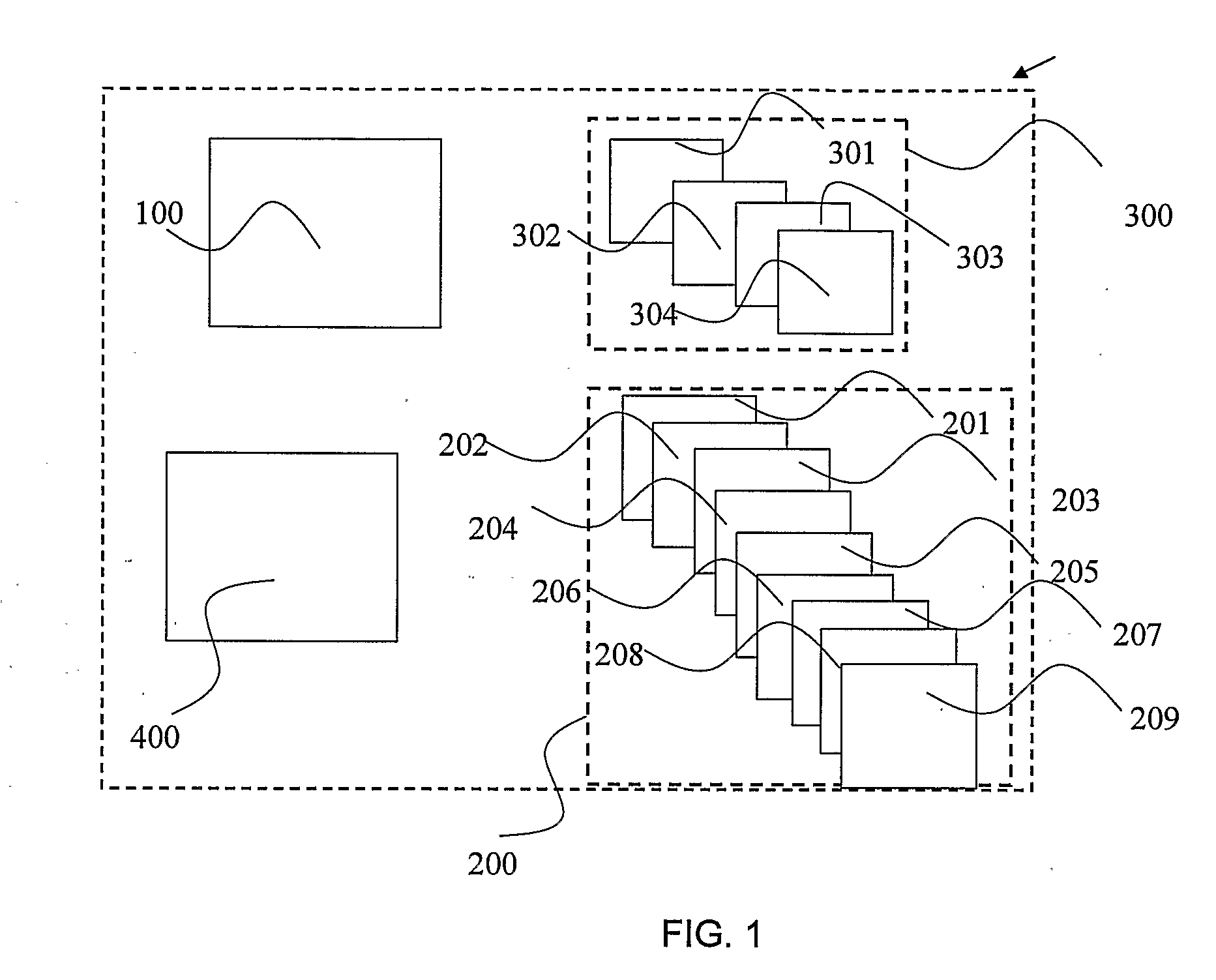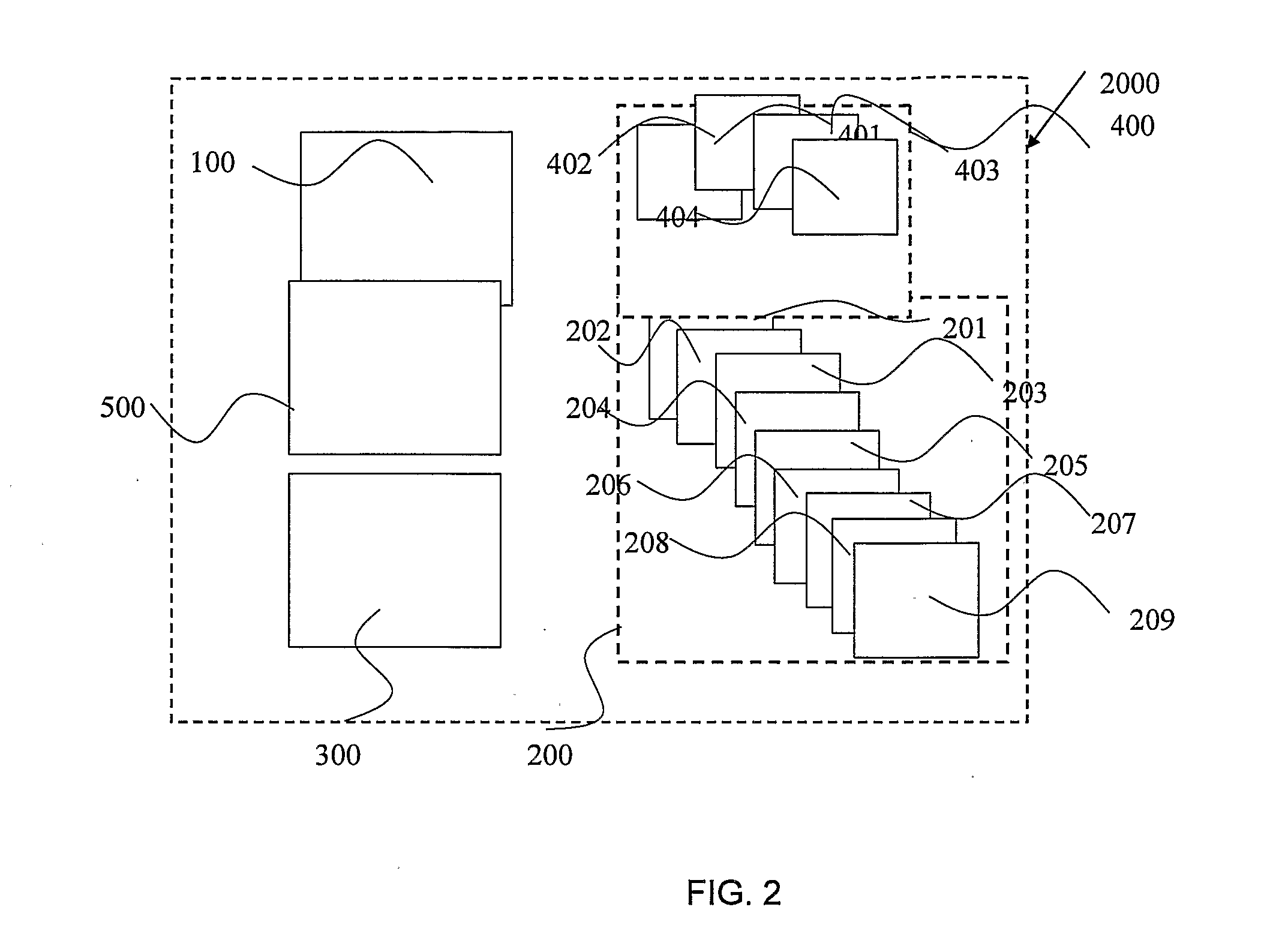Means and Methods for Detecting Bacteria in an Aerosol Sample
a technology of aerosol sample and bacteria, applied in the field of spectroscopic medical diagnostics, can solve the problems of inconvenience for patients, poor sensitivity, and sore throat of patients with infectious respiratory diseases
- Summary
- Abstract
- Description
- Claims
- Application Information
AI Technical Summary
Benefits of technology
Problems solved by technology
Method used
Image
Examples
example 1
Water Influence
[0322]One of the major problems in identifying bacteria from a fluid sample's spectrum (and especially an aerosol spectrum) is the water influence (i.e., the water noise which masks the desired spectrum by the water spectrum).
[0323]The water molecule may vibrate in a number of ways. In the gas state, the vibrations involve combinations of symmetric stretch (v1), asymmetric stretch (v3) and bending (v2) of the covalent bonds. The water molecule has a very small moment of inertia on rotation which gives rise to rich combined vibrational-rotational spectra in the vapor containing tens of thousands to millions of absorption lines. The water molecule has three vibrational modes x, y and z. The following table (table 1) illustrates the water vibrations, wavelength and the assignment of each vibration:
TABLE 1water vibrations, wavelength and the assignment of each vibrationWavelengthcm−1Assignment0.2mm50intermolecular bend55μm183.4intermolecular stretch25μm395.5L1, librations...
example 2
Bacteria's Absorption Spectrum
[0483]Each type of bacteria has a unique spectral signature. Although many types of bacteria have similar spectral signatures there are still some spectral differences that are due to different proteins on the cell membrane and differences in the DNA / RNA structure. The following protocol was used:[0484]1. Strep. β hemolytic (ATCC 19615) were purchased from HY labs.[0485]2. The content of one full plate that was grass seeded with Strep. Pyo by adding 800 μL, of ddH2O to the plate and collecting the content into 1 eppendorf tube 500 μl.[0486]3. Centrifuge the tube for 5 minX14000 rpm[0487]4. Discarding the supernatant[0488]5. Adding 30 μL of ddW solution.[0489]6. Mixing the content;[0490]7. Reference reading of the empty optical cell[0491]8. Putting 500 μL of the tube in a 3 mL spray bottle[0492]9. Spraying one practice squeeze into an eppendorf tube and discarding the tube[0493]10. Spraying 2 squeezes: one on one side, and the other in the other side of ...
example 3
Distinguishing Between Two Bacteria in an Aerosol Sample
[0497]The following examples illustrate in-vitro examples to provide a method to distinguish between two bacteria within an aerosol mixture of—Streptococcus payogenes and Streptococcus Bovis and to identify and / or determine whether Streptococcus payogenes is present within the aerosol sample.
[0498]The following protocol was used:[0499]1. Strep. β hemolytic (ATCC 19615) and Streptococcus bovis (ATCC 9809) were purchased from HY labs.[0500]2. The content of two full plates of Strep pyo. is added with 800 μL of ddH2O to each plate and the content is placed into eppendorf tube. The procedure is repeated twice (collecting the content of 6 full plates to 3 eppendorf tubes).[0501]3. Step 2 is repeated for S. bovis, collecting the content of 8 full plates to 4 eppendorf tubes.[0502]4. Centrifuging the 4 tubes 3 min×9,000 rpm.[0503]5. Discarding the supernatant.[0504]6. Weighting the four eppendorf tubes.[0505]7. Transferring with 1 ml ...
PUM
 Login to View More
Login to View More Abstract
Description
Claims
Application Information
 Login to View More
Login to View More - R&D
- Intellectual Property
- Life Sciences
- Materials
- Tech Scout
- Unparalleled Data Quality
- Higher Quality Content
- 60% Fewer Hallucinations
Browse by: Latest US Patents, China's latest patents, Technical Efficacy Thesaurus, Application Domain, Technology Topic, Popular Technical Reports.
© 2025 PatSnap. All rights reserved.Legal|Privacy policy|Modern Slavery Act Transparency Statement|Sitemap|About US| Contact US: help@patsnap.com



